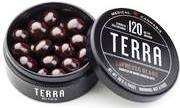Growing an Industry with Negative Associations: The Case of Cannabis
A recent article in Lift Cannabis News Magazine entitled Cannabis Brand Wars got me thinking about the challenges of building a brand in a stigmatized or “underground” product category such as recreational cannabis. While recreational cannabis use may have become legal in several US states (e.g., Colorado and Washington), and Canada maybe considering making recreational cannabis use legal, the product still carries negative associations and the image of recreational cannabis users is negative. As such, building successful mainstream brands in this category and indeed moving the whole category mainstream, to grow the category and the brands within it, poses special challenges.
Thinking about it, it reminded me of parallels with the country-of-origin effect and a case I wrote several years ago on building the LG brand in the US–the parallel between the cannabis industry and the LG brand at the time of its introduction in the US in 2002, is that both are victims of negative stereotyping–Korean products were broadly perceived as second rate in the US at the time, and LG as a Korean brand had to overcome these. One of the key things that the LG brand did as it entered the US market in 2002, aside from significant product innovations (see my case), was to copy key design features of European white goods, as European products were seen as aspirational and superior quality by consumers in the US. LG introduced front-loading machines which was typical of European washing machines (the US brands typically featured top-loading machines which accounted for 90% of the washing machine market at the time). The styling was also deliberately and distinctively European. And, they called the washing machine line Tromm, a derivative of the German word for drum, trommel. Importantly, their research showed that the name sounded European. These steps helped LG distance itself from its Korean roots and the negative stereotype associated with the category of “Korean products” at the time, and associate itself to a category with positive associations among local US consumers, “European products”. LG washing machines, refrigerators, and the like, went on to become, to quote senior executives at LG with whom I spoke at the time, the “Mercedes Benz” of the white goods industry, commanding the highest ASP and receiving top ratings from both Consumer Reports and the JD Powers Consumer Satisfaction Survey in the mid-2000s.
What can we learn from this for brands in the cannabis industry? One way to overcome a negative stereotype is to strengthen the mental connections of the target category with a category that has positive associations. Some players in the cannabis industry are doing this. Thus, consider Kiva, a brand that sells cannabis infused confections. To enter their website one needs to indicate if one is over 18 years of age, drawing parallels with websites for alcoholic beverages, a mainstream and “legitimate” product category, in consumers’ minds. Moreover, the product form is a confection and confectionery is a mainstream product category. Consuming chocolates does not have negative connotations and, if anything, current thinking suggests that cocoa butter is healthy. The consumption method itself also differs from the typical ingestion method associated with cannabis, smoking, which also has a negative connotation today, this further weakens the ties typically associated with the category.
The “About Us” tab on Kiva’s website opens with the sentence “KIVA Confections creates cannabis infused chocolate products and is one of the most recognized medical cannabis companies in California.” (emphasis added), drawing links to the pharmaceutical industry, an industry that is both mainstream and important for consumer health and well-being, the latter being a counterpoint to the negative associations consumers might typically hold about cannabis and cannabis users. This association is strengthened with the mention in the last sentence of the section that Kiva products deliver “certified amounts of medicinal cannabis“. The verbal components are further strengthened through visual images that rotate through the top of the page, images that are reminiscent of the pharmaceutical industry and appear modern and professional.
The “Products” tab on the website leads to pictures of the products available, which are shown packaged in exclusive looking packages with associations to high quality and gourmet products; associations further reinforced by introducing them as “Artisan Confections”.
Collectively, such efforts are likely to create strong associations with product categories that are acceptable, legitimate, and mainstream. As these associations become stronger over repeated exposure, they are likely to not-only be the first associations that are retrieved by consumers but they are also likely to crowd-out the extant undesirable associations–see my research on part-list cuing. Over time, as more brands adopt a similar strategy, albeit in a differentiated way, it would be reasonable to see a positive shift in consumers’ view of the cannabis category, its users, and of the brands within the category.




